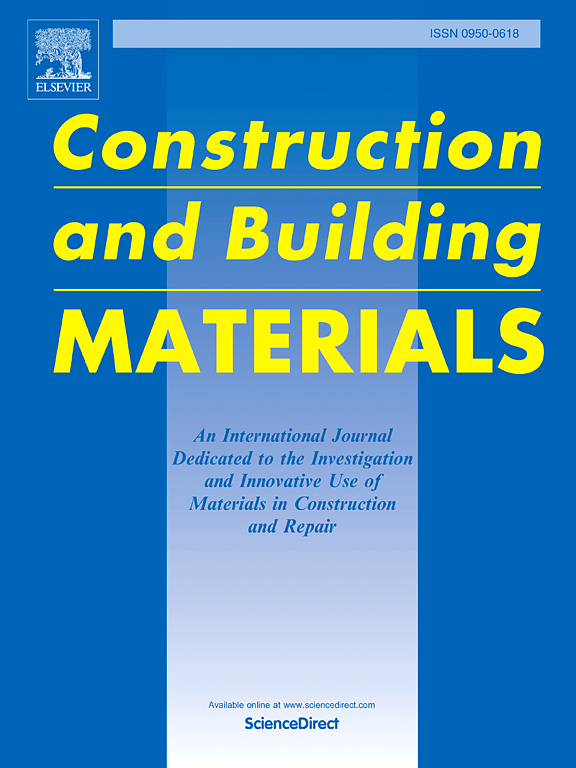Underwater dam crack image enhancement and crack detection based on improved diffusion model and SDI-ASF-YOLO11
IF 8
1区 工程技术
Q1 CONSTRUCTION & BUILDING TECHNOLOGY
引用次数: 0
Abstract
Underwater cracks are a prevalent and hazardous structural issue during dam operations. The early identification and mitigation of cracks are enabled by the effective capture and analysis of underwater structural surface images. However, complex underwater environments and imaging mechanisms often degrade crack image quality, causing blurring, color distortion, and low contrast. These factors significantly hinder the performance of existing visual detection methods. To address these challenges, this study proposed a method for underwater crack image enhancement and detection in dams by integrating an improved diffusion model and SDI-ASF-YOLO11 architecture. First, a generative diffusion model for underwater crack image enhancement (Underwater Diffusion Model, UWDM) was developed by incorporating prior knowledge of marine underwater images through transfer learning, enabling cross-domain enhancement of crack images in dam environments. An underwater imaging platform was also constructed to generate a benchmark dataset of underwater cracks. The effectiveness of the UWDM method was validated through both qualitative and quantitative analyses. Subsequently, an improved crack detection model, SDI-ASF-YOLO11, featuring with an optimized feature fusion network, was proposed to enhance the detection accuracy and segmentation quality. Case studies showed that UWDM substantially improved the visual quality of degraded crack images. The performance metrics improved by 12.41 % in IE, 9.91 % in UCIQE, and 218.45 % in UIQM, compared to the original images. The combined utilization of UWDM and SDI-ASF-YOLO11 further boosted the detection accuracy by 51.6 % and segmentation accuracy by 45.9 %. This integration of image enhancement and model optimization enables accurate dam crack detection. The proposed approach demonstrated effectiveness in crack detection, applicability in engineering environments, and superiority in terms of methodological design.
基于改进扩散模型和SDI-ASF-YOLO11的水下大坝裂缝图像增强与裂缝检测
水下裂缝是大坝运行中普遍存在的危险结构问题。水下结构表面图像的有效捕获和分析使裂缝的早期识别和缓解成为可能。然而,复杂的水下环境和成像机制往往会降低裂缝图像的质量,造成模糊、色彩失真和低对比度。这些因素严重影响了现有视觉检测方法的性能。针对这些挑战,本研究提出了一种基于改进扩散模型和SDI-ASF-YOLO11架构的大坝水下裂缝图像增强与检测方法。首先,通过迁移学习,结合海洋水下图像的先验知识,建立了水下裂纹图像增强的生成扩散模型(水下扩散模型,UWDM),实现了大坝环境下裂纹图像的跨域增强。搭建水下成像平台,生成水下裂缝基准数据集。通过定性和定量分析验证了UWDM方法的有效性。随后,提出了一种改进的裂纹检测模型SDI-ASF-YOLO11,该模型具有优化的特征融合网络,以提高检测精度和分割质量。实例研究表明,UWDM极大地提高了退化裂纹图像的视觉质量。与原始图像相比,性能指标在IE中提高了12.41 %,在UCIQE中提高了9.91 %,在UIQM中提高了218.45 %。UWDM与SDI-ASF-YOLO11的联合利用进一步提高了检测准确率51.6 %,分割准确率45.9 %。这种图像增强和模型优化的集成使精确的大坝裂缝检测成为可能。所提出的方法证明了裂纹检测的有效性,在工程环境中的适用性,以及在方法设计方面的优越性。
本文章由计算机程序翻译,如有差异,请以英文原文为准。
求助全文
约1分钟内获得全文
求助全文
来源期刊

Construction and Building Materials
工程技术-材料科学:综合
CiteScore
13.80
自引率
21.60%
发文量
3632
审稿时长
82 days
期刊介绍:
Construction and Building Materials offers an international platform for sharing innovative and original research and development in the realm of construction and building materials, along with their practical applications in new projects and repair practices. The journal publishes a diverse array of pioneering research and application papers, detailing laboratory investigations and, to a limited extent, numerical analyses or reports on full-scale projects. Multi-part papers are discouraged.
Additionally, Construction and Building Materials features comprehensive case studies and insightful review articles that contribute to new insights in the field. Our focus is on papers related to construction materials, excluding those on structural engineering, geotechnics, and unbound highway layers. Covered materials and technologies encompass cement, concrete reinforcement, bricks and mortars, additives, corrosion technology, ceramics, timber, steel, polymers, glass fibers, recycled materials, bamboo, rammed earth, non-conventional building materials, bituminous materials, and applications in railway materials.
 求助内容:
求助内容: 应助结果提醒方式:
应助结果提醒方式:


